Replanting Clones at Monte Bello
Blog Post
In 2007, Ridge took out a long-term lease on much of the old Rousten Ranch, a vineyard located on Monte Bello, to replant the vineyards—hoping that they produce wines that can contribute to our Estate and Monte Bello wines. The following reports on our clones and replantings of Rousten were gathered by our VP of Vineyard Operations, David Gates.
Defining the Wine Grape Clone
Government agencies collected grape varieties and began to analyze and categorize any variations within varieties. If a particular variation or selection was deemed worthy to be recognized as unique, superior, or suited to a specific use, it was held separate for propagation.
The vines propagated from these individual selections are called clones; they all come from the original mother vine. The number of clones per variety varies and depends on the age of the variety (ie. pinot noir has more different clones than cabernet sauvignon), its economic importance (ie. shiraz/syrah in Australia and France), and the variety’s prestige (cabernet sauvignon has many named clones, with not much difference between most of them other than the vineyard/winery attached to the name). Clonal research in grapevines is vital to try to save and categorize as much genetic variation as possible, which will continue to improve wine quality.
About the Rousten Ranch Property
The Rousten family purchased this beautiful property in 1901 or 1902, right after a major wildfire had swept through, burning all but a few firs, oaks, and laurels.
The family fortunes changed right after the 1906 earthquake when several springs magically appeared on their property. (We have seen our own wells respond the same way after the 1989 Loma Prieta quake.) They quickly planted grapes and an orchard and entered the wine business.
The winery survived Prohibition and reopened afterward, only to close in the late 1950s when Charlie Rousten, the sole heir, decided he would rather dump his wine than submit to requests from the Bureau of Alcohol, Tobacco, and Firearms that he cement his cellar floor.
When Charlie passed in 1991, he left his properties to Lois Ortmann, a now-retired schoolteacher. Ten years ago, Lois recognized that vineyards would be a great way to use her land, and we were sure that good grapes could be grown there.
The Vineyard Replanting Begins
By 2008 we had the first phase planted to cabernet sauvignon (3.9 acres), cabernet franc (2.5 acres), and petit verdot (1.2 acres). This was followed in 2010 by the second phase of planting: chardonnay (5 acres), and more cabernet sauvignon (6 acres). Our third phase of 8.9 acres was interrupted by drought – we spread the planting over two years (2014 and 2015). This last phase is predominantly cabernet sauvignon with 0.6 acres of petite verdot and 0.4 acres of zinfandel clones from Croatia.
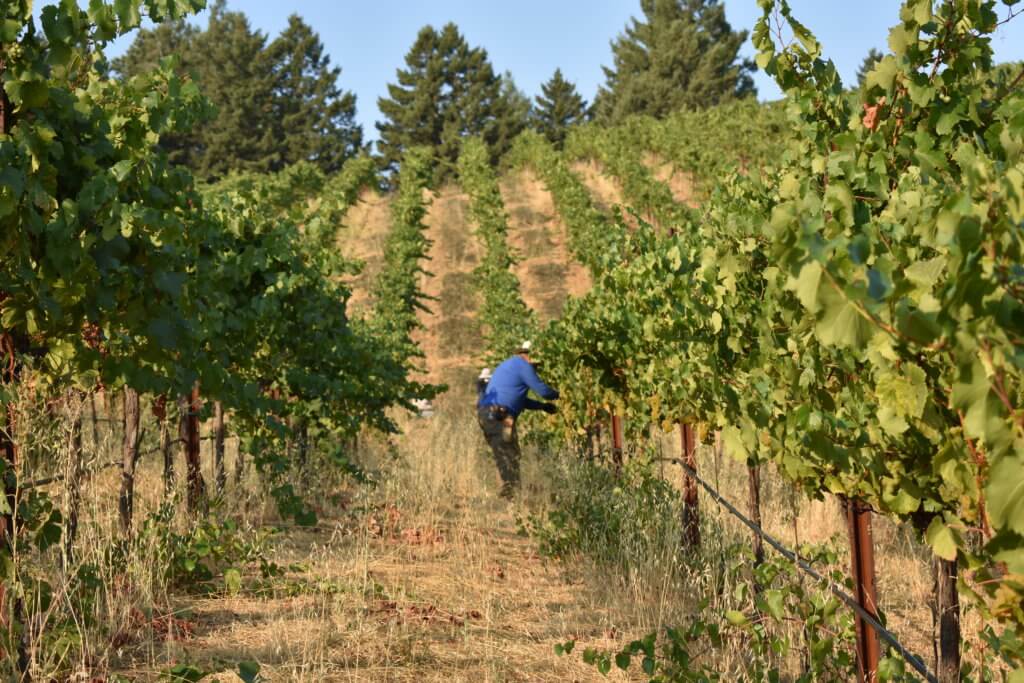
Experimentation of Wine Grape Clones
Having a property that hadn’t been planted to wine grapes for half a century presented us with a unique opportunity for experimentation with grape clones. For example, the La Cuesta clone of cabernet sauvignon, which we have used extensively in the replantings at our Torre Ranch. Additionally, we have a new clone of our oldest cabernet sauvignon, Fountaingrove, from old vines planted in 1949, of which we have cleaned of virus and begun to plant.
But there are still many other clones out in the world that we thought might add further complexity to our wines. With that in mind, we planted small blocks of several different clones of cabernet sauvignon, chardonnay, and cabernet franc.
Current Clones at Rousten Ranch
The following is a short description of the clones we have planted at Rousten Ranch at Monte Bello.
To assess their quality, we fermented each of these clones separately as they matured. As the clones prove their quality, we will be able to create a mix of the best. This should produce more complex wines, and avoid a monocultural approach as we replant the rest of the abandoned vineyards on Monte Bello Ridge.
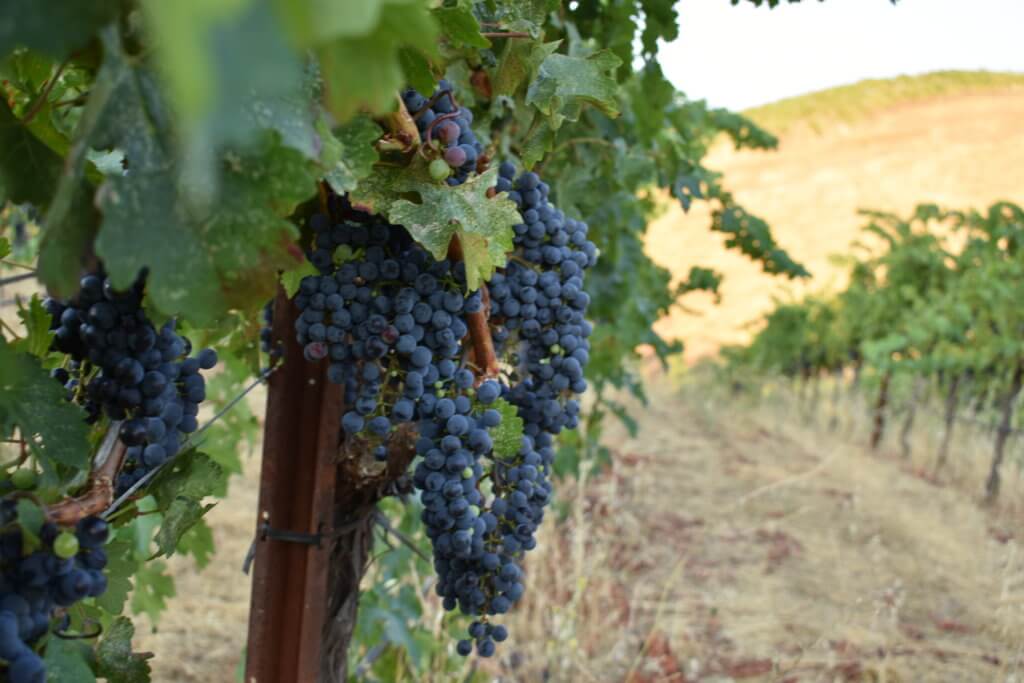
Cabernet Sauvignon Clones
1. Fountaingrove clone. From vines planted in the 1890’s at a commune near Santa Rosa. This clone was used in 1949 to replant cabernet at Monte Bello on vineyards abandoned during Prohibition.
2. La Cuesta clone. Propagated from vines Martin Ray planted at Mt. Eden in the 1940’s that came from Rixford’s La Cuesta winery in Woodside, planted in 1884. The original source were cuttings from Margaux.
3. Mt. Eden clone. Essentially the same DNA as the La Cuesta clone but has been ‘Meristem’ treated and certified. We planted this clone at Torre, Rousten and Perrone.
4. Jackson clone. Cuttings are originally taken in 1964 from vines planted in the 1890s at the Jackson field station in the Sierra foothills. Very low yields and good intensity.
5. Oakville clone. Cuttings were taken from the Shaw vineyard (now Wildwood/Kunde in Glen Ellen) in 1939 by Professor Olmo of UC Davis. The original vines date back to the 1890’s. Yields are low, quality high; can be excessively vigorous.
6. See Ranch clone. From vines in the Oakville district of Napa dating back to 1969.
7. ENTAV clones. Four of the best Bordeaux clones from the certified French nursery system (ENTAV), chosen for the quality of their tannins and aroma. We will see how they do in California.
8. Argentine clone. A clone imported from old vines at Mendoza. Average yields, good color, and tannins.
Cabernet Franc Clones
1. ENTAV clones. Two Bordeaux clones; one gives good structure and the other aroma. Unfortunately, the first planting had Redblotch virus and we had to replant, but we’re expecting fruit in the harvest of 2021.
2. An Old Italian clone. Moderate yields, elegant wines.
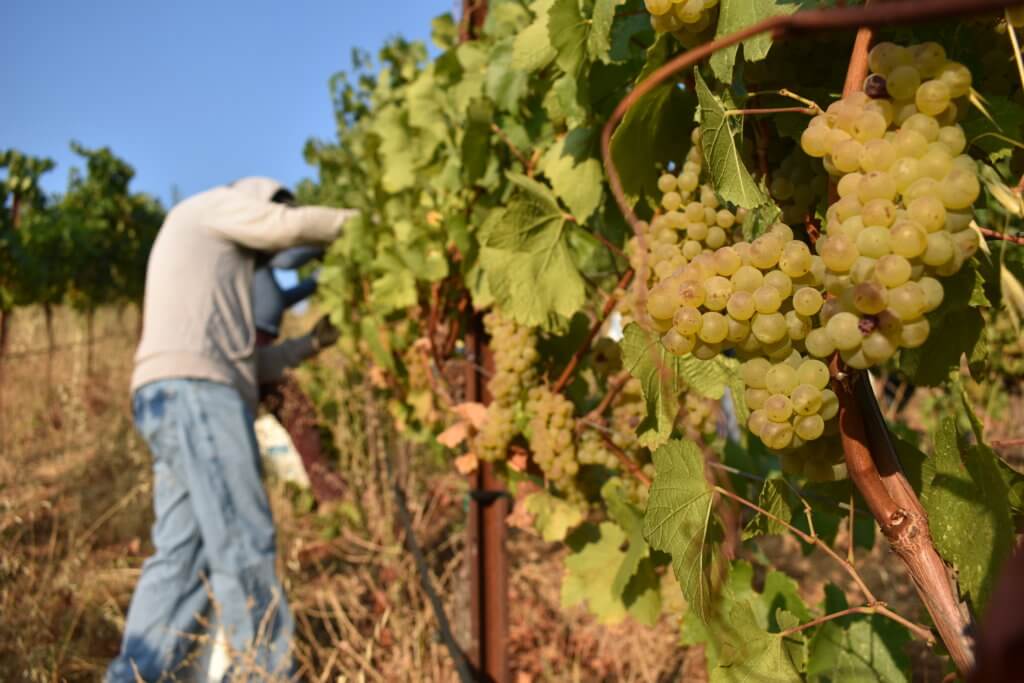
Chardonnay Clones
1. Mt. Eden clone. Supposedly originated with cuttings collected in the 1890s from Champagne by Paul Masson.
2. An Old Wente clone. Ripens early. Elegant, complex wines.
3. Robert Young clone. A clone from the old Robert Young vines in Sonoma. Good acidity, low yields.
4. ENTAV clones. Two Burgundian clones. One gives richness, with moderate acid. The other gives good productivity with aromatic, elegant wines.
Maps of Replantings and Clones at Rousten Ranch
Below you can find the latest maps of our recent replantings. Click any photo to view a larger map.
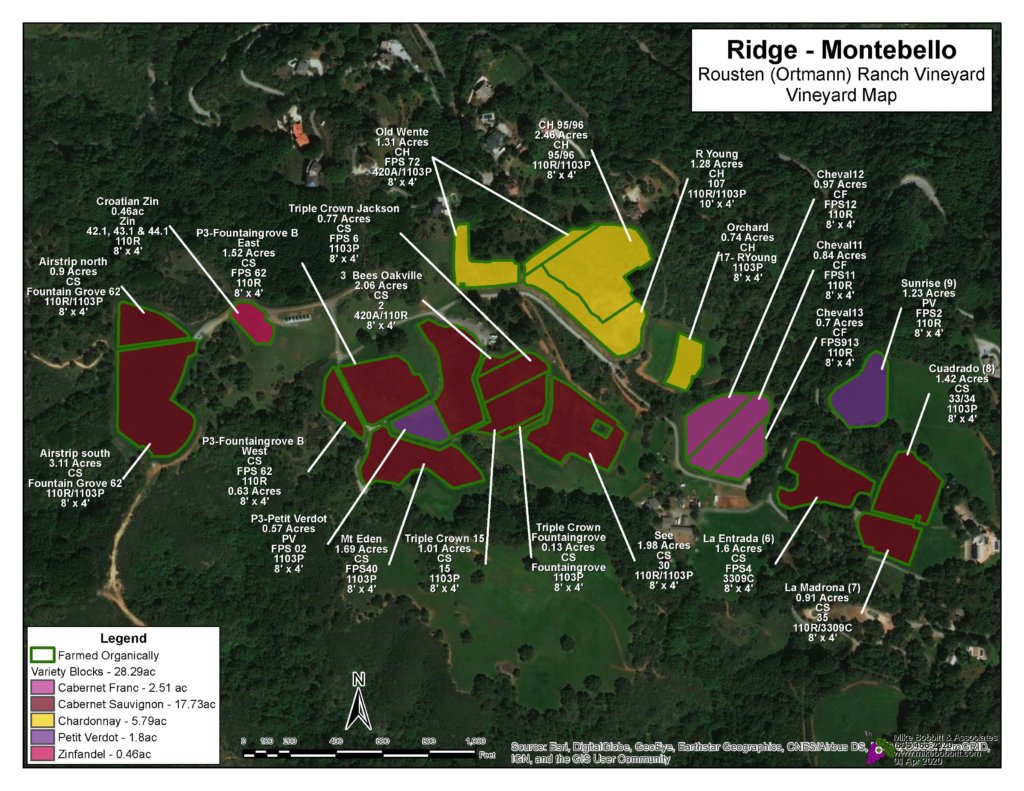
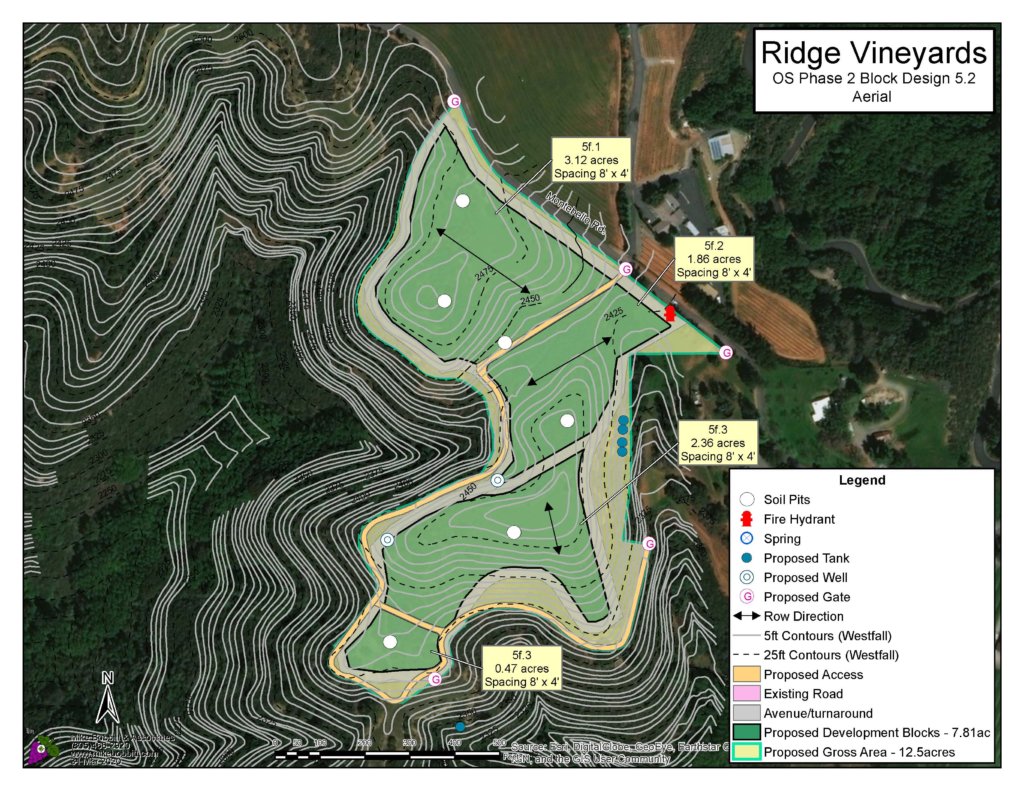
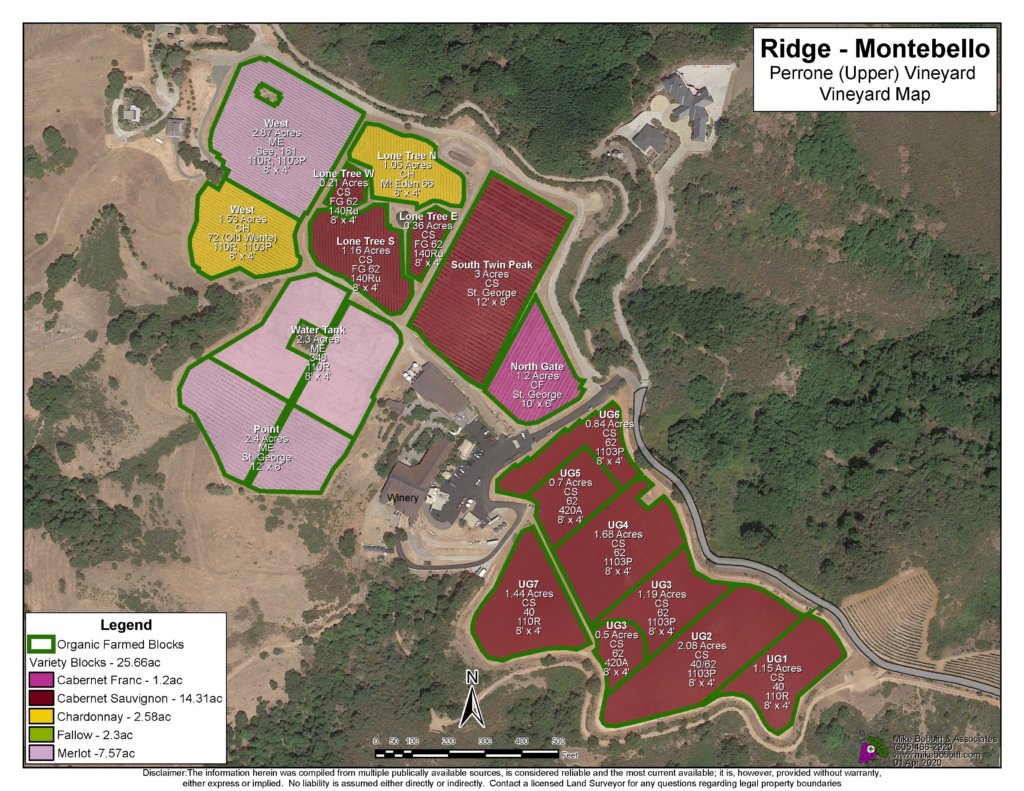
Wait!
In order to qualify for user related discounts, you must log in before proceeding with checkout. Click the button below to log in and receive these benefits, or close the window to continue.
Log In